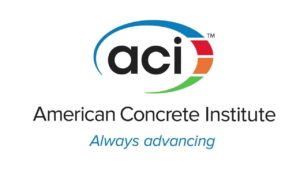Advocates for investing in the nation’s infrastructure are hesitant to single out certain projects as deserving priority over others, arguing that sustained funding and attention is needed equally across the board.
But there are some crumbling structures threatening both the economy and public safety that are just too urgent not to point out.
Here are five transportation projects around the country that experts believe are in dire need of repair.

Image Source: Getty Images
The Brent Spence Bridge
Connecting Cincinnati and Covington, Ky., the Brent Spence Bridge carries a busy stretch of interstate highway across the Ohio River that is responsible for moving 4 percent of gross national product.
The 53-year-old structure was only designed to carry 80,000 vehicles per day; the bridge carried 150,000 vehicles per day in 2006, causing serious delays for commuters and businesses on a daily basis, with volume expected to grow even higher in 2025, according to the Ohio Department of Transportation.
In addition to overcrowding and congestion, there are mounting concerns about the safety of the bridge after chunks of concrete fell from the upper deck onto the lower deck. Statistics also show that drivers are three to five times more likely to have a wreck along the corridor.
Some transportation planners are calling on officials not only to rehabilitate the bridge but to construct a new one alongside it. Every year of delay in the start of construction costs the taxpayers nearly $75 million per year in inflation, according to the Ohio Department of Transportation.
President Obama visited the bridge in 2011 as part of a broader push for infrastructure investments.
“It’s in such poor condition, it’s functionally obsolete,” Obama said of the bridge. “The thing is, there are bridges and roads and highways like that throughout the region.”
Washington’s Metrorail System
The transit system of the nation’s capital, once hailed as a crown jewel in public transportation, has become a symbol of Washington dysfunction.
Metrorail has been plagued by a string of high-profile safety lapses and reports of mismanagement, including a deadly accident in 2015 in which smoke from a tunnel fire filled a stalled train car and killed one passenger.
Another similar smoke incident earlier this year led to an unprecedented shutdown of the entire subway system for emergency inspections and immediate repairs.
New leadership has been charged with the herculean task of overhauling Metro, which is the second busiest transit system in the country and is used by a large share of the federal workforce. The agency is rolling out a massive, yearlong rehabilitation plan that is expected to involve partial shutdowns and major service disruptions.
But some Metro officials say more federal money is needed for its operating budget, adding that a dedicated regional funding stream is crucial for long-term maintenance and safety.
“You have to help us, otherwise we can’t survive,” Board Chairman Jack Evans told a House panel last month.
The Gateway Rail Tunnel Project
The connection between New Jersey and Penn Station in New York City consists of a pair of aging, 105-year-old tunnels under the Hudson River, which were already in desperate need of repair before taking additional damage from Superstorm Sandy.
With the tubes expected to be closed down at some point in the next decade for at least a year of repairs, the $24 billion Gateway Rail Tunnel project would construct two new tunnels and add platform and station capacity in Penn Station.
Closing existing tunnels without the creation of additional tracks would reduce system capacity by 75 percent, according to the latest Common Good report, harming the regional economy and causing paralytic traffic jams.

Image Source: A/P Images
“The Northeast Corridor contributes over $50 billion annually to our economy,” Sen. Cory Booker (D-N.J.) told The Hill. “Yet we’ve allowed it to get to a point where’s its decaying so thoroughly that a 100-year-old bridge is putting a chokehold on the entire Northeast … because of a self-inflicted wound of monumental proportions.”
The I-10 Bridge
One of the most pressing transportation projects in Southwest Alabama is constructing a new bridge over the Mobile River and widening the I-10 Bayway.
The current I-10 Bridge has been afflicted by bottleneck traffic, fueled by congestion from the Wallace Tunnel. Advocates for a new bridge say the project would boost the area’s economic competitiveness, as well as provide a safe hurricane evacuation route for the Gulf Coast.
The Alabama Department of Transportation is currently assessing whether it can use a toll to pay for portions of construction or add bike and walking paths.
Department of Transportation Secretary Anthony Foxx has even highlighted the importance of the $850 million project, traveling to Mobile and visiting with local leaders last year.
San Francisquito Creek Bridges
A set of structurally deficient bridges over the San Francisquito Creek in Palo Alto, Calif., have caused a series of floods due to their low creek flow capacity.
Local officials have stressed how important it is to address the issue, especially given that the San Francisquito Creek is particularly flood-prone.
The California Department of Transportation was already planning on replacing the aging bridges at Highway 101, East Bayshore Road and West Bayshore Road, but the department worked with local agencies to ensure the new bridge design improves the flow of water beneath the roadway.
The replacement project is taking place in several stages over the next couple of years, ending in October 2017, but officials say they are working to mitigate traffic issues in the meantime.
Source: http://thehill.com/policy/transportation/279878-five-big-infrastructure-emergencies



